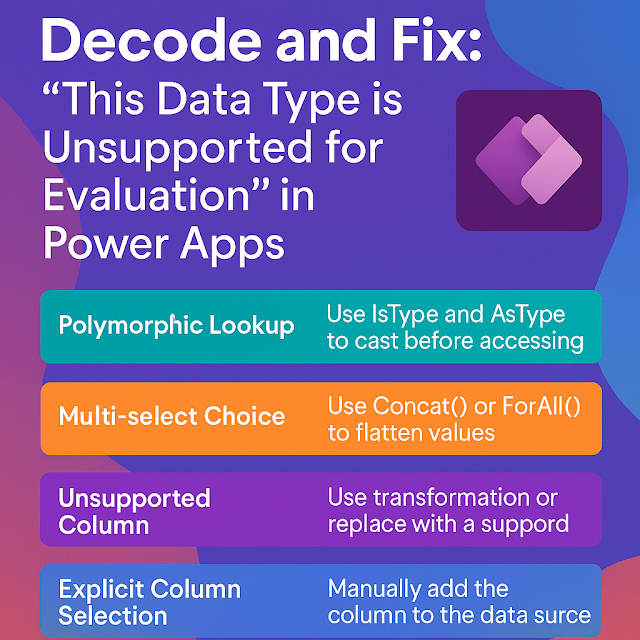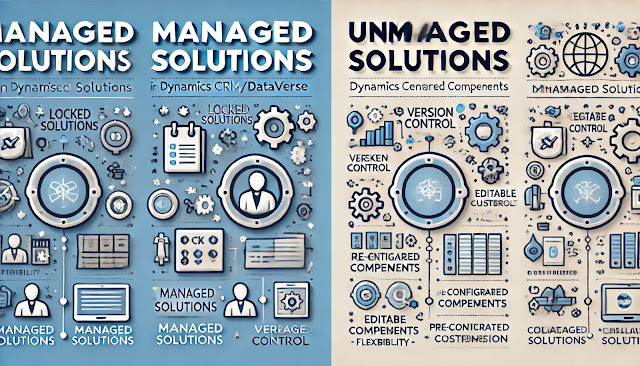Dynamics 365 Field Service : Configure fulfillment preferences
In the fast-paced world of field service management, assigning the right resource to the right job at the right time is key to delivering excellent customer service. Fulfillment Preferences in Dynamics 365 Field Service help you achieve exactly that — by fine-tuning how work orders are matched with technicians or resources.
Let’s explore how to configure fulfillment preferences, why they matter, and how they impact scheduling in your field service operations.
What Are Fulfillment Preferences?
Fulfillment Preferences are configurations that influence the Resource Scheduling Optimization (RSO) and manual scheduling of work orders. They define preferences for how bookings are created and which resources are prioritized based on factors like geography, skills, roles, and even customer needs.
Think of it as a smart matchmaking system that ensures:
- The right technician with the right skills is assigned
- The location and availability of technicians are considered
- Customer expectations such as preferred time windows or technicians are respected
Why Use Fulfillment Preferences?
Without these preferences, the system might assign any available resource, which could:
- Result in inefficient travel time
- Assign underqualified technicians
- Cause delays or customer dissatisfaction
By configuring fulfillment preferences, you:
- Reduce travel time and fuel costs
- Improve first-time fix rates
- Enhance customer satisfaction with personalized service
How to Configure Fulfillment Preferences
Step 1: Open the Resource Scheduling Settings
1. Navigate to Field Service > Settings > Scheduling Parameters
2. Ensure Resource Scheduling Optimization is enabled if you plan to use it.
Step 2: Define Booking Setup Metadata
1. Go to Resource Scheduling > Settings > Booking Setup Metadata
2. Select the entity you want to configure (e.g., Work Order)
3. Choose Fulfillment Preference as a type of metadata
This step allows you to set the entity fields that will influence scheduling.
Step 3: Create Fulfillment Preference Records
1. Navigate to Resource Scheduling > Fulfillment Preferences
2. Click + New
3. Fill in details such as:
- Resource Requirement: Link to the type of requirement (e.g., Work Order type, geography)
- Preferred Resources: Specific technicians or roles to fulfill this requirement
- Time Preferences: Preferred time windows
- Skills & Roles: Define the specific certifications or skill sets needed
- Territories: Restrict or prioritize based on location
Step 4: Link Preferences to Resource Requirements
Whenever a Resource Requirement is created (automatically from a Work Order or manually), the system can now evaluate these preferences when searching for available resources.
Use Case Examples
Example 1: Skill-Based Fulfillment
A customer reports a high-voltage issue. You configure a fulfillment preference that ensures only technicians with “High Voltage Certified” skill can be booked.
Example 2: Territory Optimization
You prefer to assign work orders within each technician’s designated territory. Fulfillment preferences can be set to prioritize resources based on geographic proximity.
Example 3: Customer-Specific Preferences
For premium customers, you may assign their preferred technician whenever available. This can be configured as a fulfillment preference for VIP accounts.
Tips and Best Practices
- Keep your resource profiles up-to-date with accurate roles, skills, and territories.
- Use priority rules to resolve conflicts between multiple preferences.
- Monitor optimization results to fine-tune preferences over time.
- Combine fulfillment preferences with resource scheduling optimization (RSO) for best results.
Reporting and Analysis
Track performance improvements after applying fulfillment preferences:
- Decrease in average travel time
- Increase in first-time fix rates
- Higher resource utilization
- Enhanced customer satisfaction scores
Use Power BI or Field Service analytics dashboards to visualize these metrics.
Final Thoughts
Configuring Fulfillment Preferences in Dynamics 365 Field Service empowers dispatchers and schedulers to make smarter, data-driven decisions. It aligns your scheduling engine with real-world constraints and customer expectations, creating a seamless service delivery experience.












Comments
Post a Comment